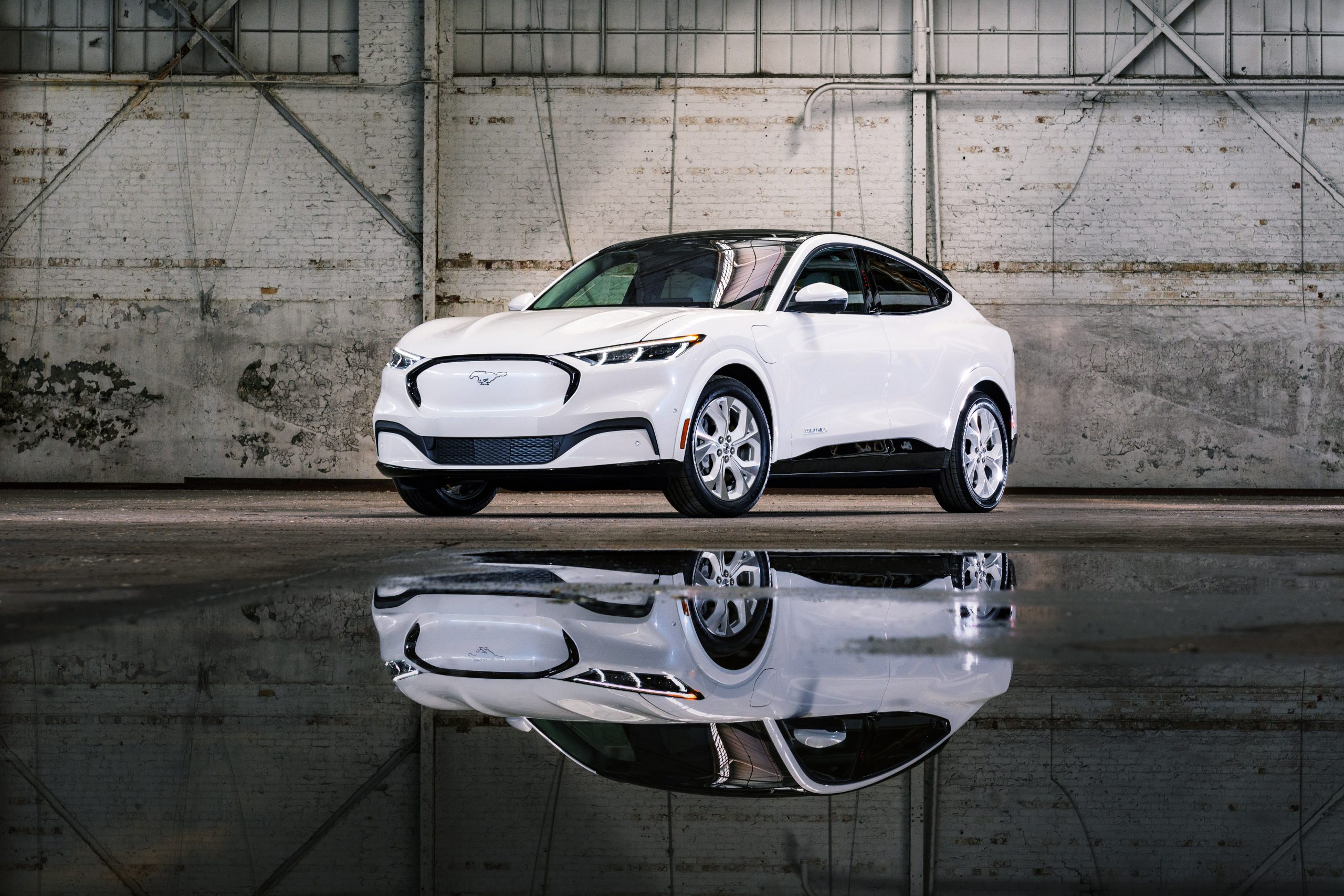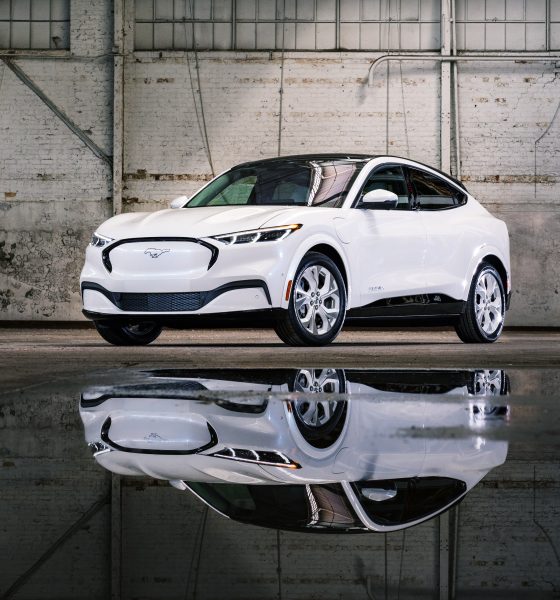Automotive chemical manufacturer Prestone is currently developing a low-conductivity electric vehicle (EV) coolant that scientists hope can increase EV efficiency.
While ethylene glycol is used in both gas vehicles and EVs, including Teslas, Prestone has increased its research and development budget for learning about less conductive cooling fluids over the past year, as detailed in a report from Automotive News on Friday. Prestone EV Director Tom Corrigan says that that won’t be the case in the future, as the company seeks to develop its own.
“Essentially, EVs are borrowing the internal combustion engine fluid,” Corrigan said. “We are going to see a shift in that in the next one to two years.”
The company has been testing its low-conductivity EV coolants in Ford Mustang Mach-E vehicles at its tech center in Danbury, Connecticut, in recent months. While initial offerings are roughly two years away and will still include ethylene glycol bases, Corrigan also says that petroleum-based dielectric coolants could replace the chemistry in future years.
Coolant types may also be dependent on battery chemistries, with lithium-iron phosphate (LFP), solid-state, and nickel manganese cobalt batteries likely all requiring different coolant makeups. Tesla writes on its website that its cooling systems currently use a phosphate and nitrate-free ethylene glycol-based coolant.
Ethylene glycol can ionize over time when it interacts with metals, plastics, and other necessary engine materials. As the coolant gains electrons, the overall efficiency of a battery-electric vehicle (BEV) is decreased. In addition, the coolant chemistry is expected to shift because of safety, as a BEV-friendly replacement for the corrosion inhibitors used in ICE coolants.
“Those ionize in the fluid and carry an electrical charge. If you have an issue where high-conductivity coolant contacts high-voltage electronics or the battery, it can lead to fire,” Corrigan explains. “So what we are working on is low-conductivity coolant.”
Scientists evaluate the electrical conductivity of coolants using a unit called microsiemens, which measures the conductivity per centimeter. In gas cars, experts expect to see between 3,000 and 5,000 microsiemens per centimeter, considered highly conductive, though it doesn’t negatively interact with gas vehicles in the same way it does for BEVs.
Instead, BEV makers are asking Prestone to develop a coolant with just 100 microsiemens per centimeter, while other fuel cell vehicles may require coolant conductivity levels of just 0.5 to 1.5 microsiemens, according to Corrigan.
“Every bit of increased conductivity is a loss of efficiency in the fuel cell. You’ve got to make the fluid very pure,” he notes.
Along with adding to the company’s R&D budget, Prestone added an additional five scientists and engineers in the department developing coolants for BEVs and fuel cells.
“We see where the future is going with EV coolants, and we want to be ready when the manufacturers are ready,” Corrigan says.
RELATED:
StoreDot closes in on U.S. market entry with launch of R&D campus in California
What are your thoughts? Let me know at zach@teslarati.com, find me on X at @zacharyvisconti, or send us tips at tips@teslarati.com.

News
Tesla FSD fleet is nearing 7 billion total miles, including 2.5 billion city miles
As can be seen on Tesla’s official FSD webpage, vehicles equipped with the system have now navigated over 6.99 billion miles.

Tesla’s Full Self-Driving (Supervised) fleet is closing in on almost 7 billion total miles driven, as per data posted by the company on its official FSD webpage.
These figures hint at the massive scale of data fueling Tesla’s rapid FSD improvements, which have been quite notable as of late.
FSD mileage milestones
As can be seen on Tesla’s official FSD webpage, vehicles equipped with the system have now navigated over 6.99 billion miles. Tesla owner and avid FSD tester Whole Mars Catalog also shared a screenshot indicating that from the nearly 7 billion miles traveled by the FSD fleet, more than 2.5 billion miles were driven inside cities.
City miles are particularly valuable for complex urban scenarios like unprotected turns, pedestrian interactions, and traffic lights. This is also the difference-maker for FSD, as only complex solutions, such as Waymo’s self-driving taxis, operate similarly on inner-city streets. And even then, incidents such as the San Francisco blackouts have proven challenging for sensor-rich vehicles like Waymos.
Tesla’s data edge
Tesla has a number of advantages in the autonomous vehicle sector, one of which is the size of its fleet and the number of vehicles training FSD on real-world roads. Tesla’s nearly 7 billion FSD miles then allow the company to roll out updates that make its vehicles behave like they are being driven by experienced drivers, even if they are operating on their own.
So notable are Tesla’s improvements to FSD that NVIDIA Director of Robotics Jim Fan, after experiencing FSD v14, noted that the system is the first AI that passes what he described as a “Physical Turing Test.”
“Despite knowing exactly how robot learning works, I still find it magical watching the steering wheel turn by itself. First it feels surreal, next it becomes routine. Then, like the smartphone, taking it away actively hurts. This is how humanity gets rewired and glued to god-like technologies,” Fan wrote in a post on X.
News
Tesla starts showing how FSD will change lives in Europe
Local officials tested the system on narrow country roads and were impressed by FSD’s smooth, human-like driving, with some calling the service a game-changer for everyday life in areas that are far from urban centers.

Tesla has launched Europe’s first public shuttle service using Full Self-Driving (Supervised) in the rural Eifelkreis Bitburg-Prüm region of Germany, demonstrating how the technology can restore independence and mobility for people who struggle with limited transport options.
Local officials tested the system on narrow country roads and were impressed by FSD’s smooth, human-like driving, with some calling the service a game-changer for everyday life in areas that are far from urban centers.
Officials see real impact on rural residents
Arzfeld Mayor Johannes Kuhl and District Administrator Andreas Kruppert personally tested the Tesla shuttle service. This allowed them to see just how well FSD navigated winding lanes and rural roads confidently. Kruppert said, “Autonomous driving sounds like science fiction to many, but we simply see here that it works totally well in rural regions too.” Kuhl, for his part, also noted that FSD “feels like a very experienced driver.”
The pilot complements the area’s “Citizen Bus” program, which provides on-demand rides for elderly residents who can no longer drive themselves. Tesla Europe shared a video of a demonstration of the service, highlighting how FSD gives people their freedom back, even in places where public transport is not as prevalent.
What the Ministry for Economic Affairs and Transport says
Rhineland-Palatinate’s Minister Daniela Schmitt supported the project, praising the collaboration that made this “first of its kind in Europe” possible. As per the ministry, the rural rollout for the service shows FSD’s potential beyond major cities, and it delivers tangible benefits like grocery runs, doctor visits, and social connections for isolated residents.
“Reliable and flexible mobility is especially vital in rural areas. With the launch of a shuttle service using self-driving vehicles (FSD supervised) by Tesla in the Eifelkreis Bitburg-Prüm, an innovative pilot project is now getting underway that complements local community bus services. It is the first project of its kind in Europe.
“The result is a real gain for rural mobility: greater accessibility, more flexibility and tangible benefits for everyday life. A strong signal for innovation, cooperation and future-oriented mobility beyond urban centers,” the ministry wrote in a LinkedIn post.
News
Tesla China quietly posts Robotaxi-related job listing
Tesla China is currently seeking a Low Voltage Electrical Engineer to work on circuit board design for the company’s autonomous vehicles.

Tesla has posted a new job listing in Shanghai explicitly tied to its Robotaxi program, fueling speculation that the company is preparing to launch its dedicated autonomous ride-hailing service in China.
As noted in the listing, Tesla China is currently seeking a Low Voltage Electrical Engineer to work on circuit board design for the company’s autonomous vehicles.
Robotaxi-specific role
The listing, which was shared on social media platform X by industry watcher @tslaming, suggested that Tesla China is looking to fill the role urgently. The job listing itself specifically mentions that the person hired for the role will be working on the Low Voltage Hardware team, which would design the circuit boards that would serve as the nervous system of the Robotaxi.
Key tasks for the role, as indicated in the job listing, include collaboration with PCB layout, firmware, mechanical, program management, and validation teams, among other responsibilities. The role is based in Shanghai.
China Robotaxi launch
China represents a massive potential market for robotaxis, with its dense urban centers and supportive policies in select cities. Tesla has limited permission to roll out FSD in the country, though despite this, its vehicles have been hailed as among the best in the market when it comes to autonomous features. So far, at least, it appears that China supports Tesla’s FSD and Robotaxi rollout.
This was hinted at in November, when Tesla brought the Cybercab to the 8th China International Import Expo (CIIE) in Shanghai, marking the first time that the autonomous two-seater was brought to the Asia-Pacific region. The vehicle, despite not having a release date in China, received a significant amount of interest among the event’s attendees.










